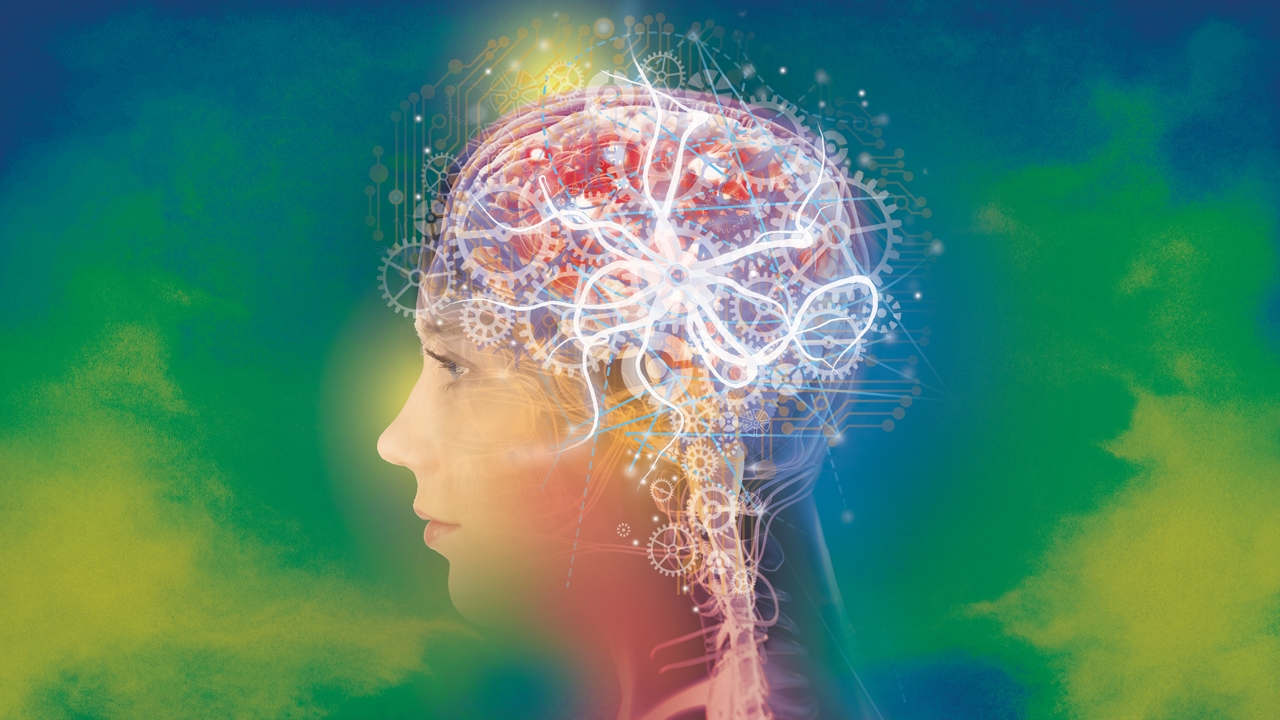“For many people, a picture of a loved one will actually cut their pain in half,” says Jarred Younger, Ph.D., a UAB experimental psychologist who conducted this test. The same goes for hypnosis, acupuncture, and sugar pills, he’s found. In each case, a person’s brain responds to pain in a new way, even when the treatment has no rational basis.
Anyone who has learned a new language, memorized lines for a play, studied for a test, or watched a child begin to understand the world around them can easily grasp the idea that the human brain is capable of learning new facts, words, and concepts. But UAB scientists like Younger, probing the full capability of the brain, are interested in teaching it new ways of interacting with the human body. By shaking up the way the brain processes information and communicates with the nerves winding throughout the body, each researcher is harnessing the power of the brain to heal.
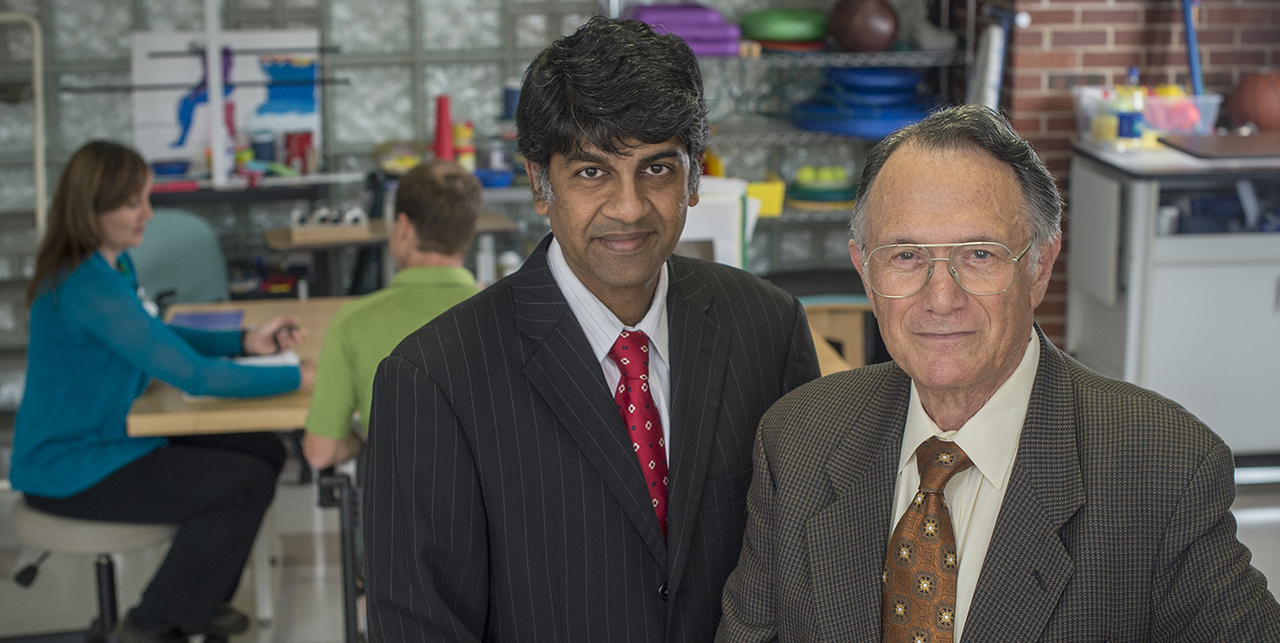 Gitendra Uswatte (left) and Edward Taub (right)
Gitendra Uswatte (left) and Edward Taub (right)
Restoring Communication, Regaining Function
Seventeen years after a stroke that rendered his right arm nearly paralyzed, the 53-year-old “patient number 10” still struggled to use his right side. Despite being right-handed, he reported only rarely using his right hand in daily tasks—he had learned to rely on his left hand for everything from brushing his teeth to using a fork to opening a door. But Edward Taub, Ph.D.—a behavioral neuroscientist and University Professor in the UAB Department of Psychology—didn’t see any reason the patient couldn’t use his right hand again. The nerves and muscles of the right arm and hand were intact, Taub observed, and the man was healthy and competent. The brain just needed a reminder of how to communicate with the limb.
For 12 days, patient 10 had a new morning routine: sliding a hard splint onto his left wrist, then propping his left arm up in a sling. As he carried out assigned, supervised tasks, he had no choice but to use his much weaker right side. He stacked blocks with his right hand, maneuvered eating utensils with his right hand, and twisted keys into keyholes with his right hand.
Several months later, Taub’s research group followed up with patient 10. Where once he reported only rarely using his right arm, the man said he now used his right side nearly as often as he did before his stroke. Without drugs or surgery, without anything except for the power of the man’s own brain, Taub had helped him regain function in a limb assumed useless.
In the 1970s and ’80s, Taub’s research contributed to a major shift in thinking about neuroplasticity—the ability of the brain to change, grow, and repair itself. Instead of ending in childhood, as most scientists had believed, this malleability had the potential to extend into adulthood. Taub used this discovery to develop Constraint-Induced Movement therapy (CI therapy), and over the past two decades, he—in collaboration with UAB clinical psychologist and professor Gitendra Uswatte, Ph.D.—has used it to help thousands of stroke patients. The therapy centers around the idea that when the body is forced to use only one limb, the brain will adapt, strengthening its communication with that part of the body.
On average, a patient who goes through CI therapy uses his or her affected limb five times more afterward. And 97 percent of stroke patients who qualify for treatment—they must be otherwise healthy—see a clinically significant level of improvement. But the two researchers have also adapted the approach for other patient populations. Taub and Uswatte have helped hemiplegic patients with tightly fisted hands who can barely move a finger before treatment, enabling them to grasp and pick up objects after therapy. They’ve teamed up with Children’s of Alabama to help children with cerebral palsy gain new movement ability. And they’ve even applied CI therapy to stroke patients who have aphasia—an impairment in the ability to speak.
“We don’t tie down the tongue,” Taub explains. “But we strongly discourage gestures, pointing, grunting, and other nonverbal communication they’ve relied on. We confine them to just speech.”
Taub and Uswatte have stepped back to examine why CI therapy works so well. When they’ve scanned the brains of patients before and after CI therapy, they’ve seen clear differences: After therapy, there are expanded areas of the gray matter of the brain associated with an affected limb.
“This was so out of left field that folks would read our papers, and even though we clearly reported a structural change, they still didn’t believe it,” says Uswatte. But Uswatte and Taub have repeated the brain scans in different patient groups and repeatedly obtained the same finding—changing a person’s behavior changes his or her brain. That, in turn, can change physical capabilities.
“The therapy takes advantage of the natural ability of the brain to adapt to changes in the environment,” says Uswatte. “We just help the brain repair itself,” Taub adds.
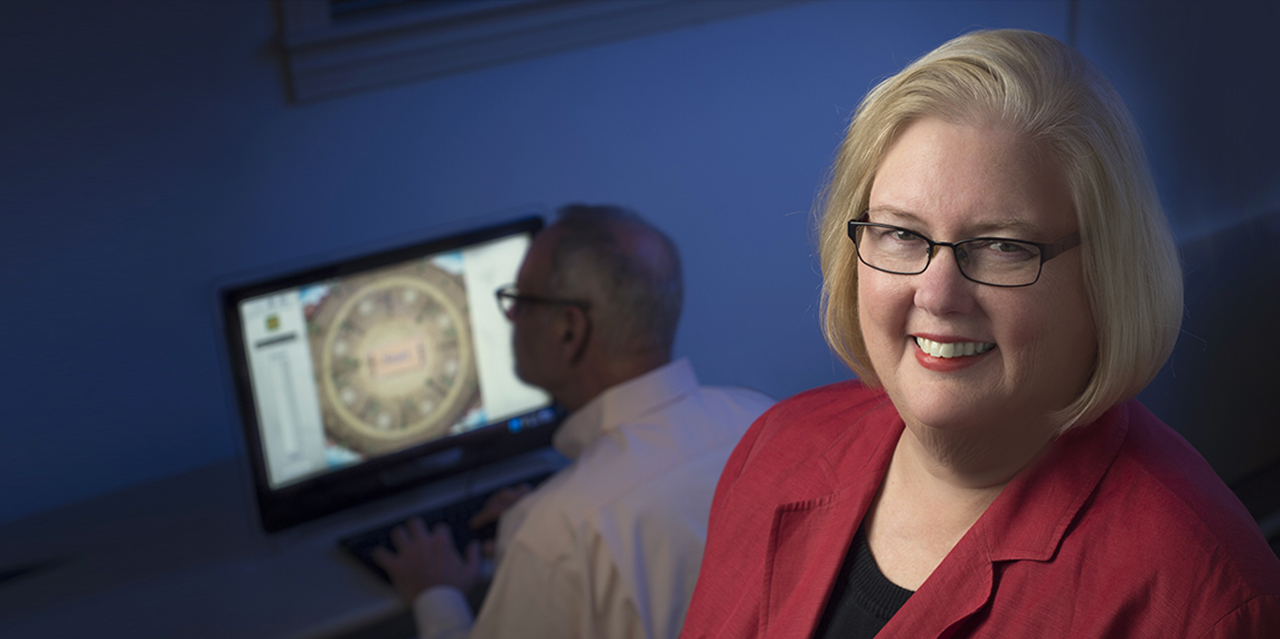 Karlene Ball
Karlene Ball
Training the Aging Brain
“It used to be that people thought your brain function declined as you got older, and there was not much you could do about it,” says Ball, University Professor, Department of Psychology chair, and director of the Edward R. Roybal Center for Research on Applied Gerontology. “But our work has shown that the brain is very adaptive and, given the particular situation, can continue to learn and improve throughout the lifespan.”
In one task, participants are asked to identify an object in the center of the computer screen while they’re simultaneously paying attention to objects on the edges. “At the end of the program, people say, ‘Oh, you made it slower,’” Ball describes. “But in reality, it stayed the same speed; they got faster.”
Ball has established the effect that “brain training” can have on the lives of patients—in addition to becoming better drivers, people who have completed her program are less likely to experience cognitive decline over the entire next decade. Her approach has also been shown to prevent the “brain fog” that often accompanies chemotherapy treatments and to help ease some symptoms of Parkinson’s disease and multiple sclerosis.
Like Taub and Uswatte, Ball now wants to understand why the training programs work so well. How does a computer program cause the brain to change, and how does that make people pay better attention to their surroundings? To find the answers, she is planning a study to analyze patients’ brains in an fMRI scanner before and after treatment.
“As we understand a bit more about the physiology of it, we might be able to better tailor the program for individual needs,” Ball says. “Some people might respond better to particular aspects of it than others, and maybe that’s reflected in the brain.”
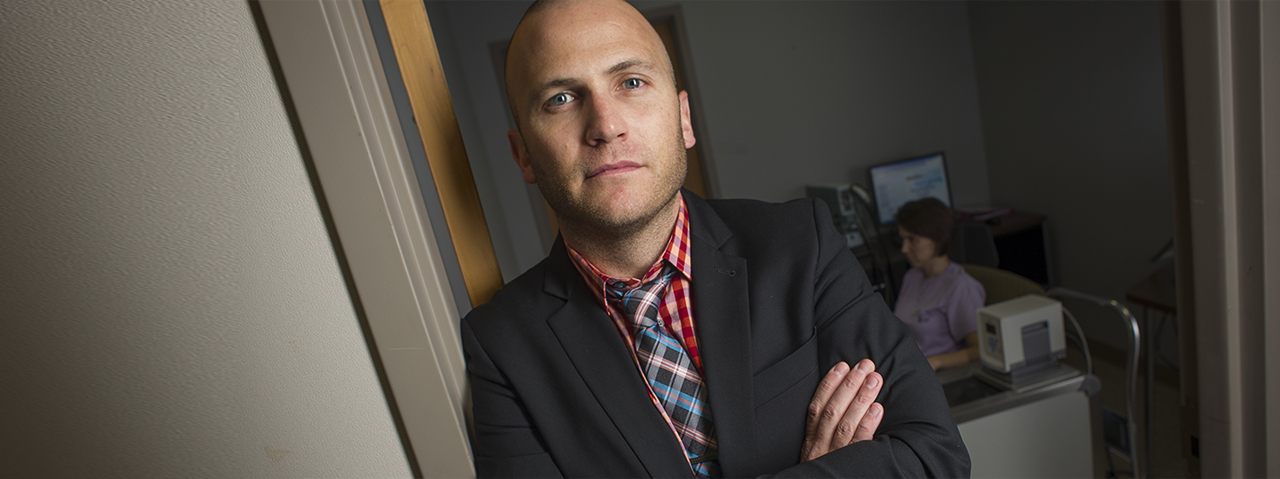 Burel Goodin
Burel Goodin
Placebo Power
“Just because a psychological method of dealing with pain is effective, it doesn’t mean the pain is all in your head,” explains UAB clinical health psychologist Burel Goodin, Ph.D. That very real pain is the focus of Goodin’s research, and recently he identified a vicious cycle of chronic pain and sleep deprivation that could point the way to a potential new solution for both.
When a person suffers chronic pain—rather than a brief injury—his or her body produces higher levels of hormones and chemicals that are normally reserved for a quick “fight-or-flight” response. For the months or years that the pain lasts, the person’s body remains on constant heavy alert, which can affect sleep.
But Goodin, while studying patients with chronic back pain, discovered that the relationship between sleep and pain isn’t a one-way street. A lack of sleep also changes the way people respond to pain, making them more sensitive—not just to their chronic pain, but to all sorts of painful stimuli. “It promotes a negative downward spiral,” Goodin says.
With this new link in mind, Goodin is studying how to break the cycle by teaching patients how to manage their stress and improve sleep habits. “When it comes to chronic pain today, it’s not unusual to have a pain psychologist on your care team,” Goodin says. “That’s not because we think your pain is made up. It’s because there’s a physiological link between your mental state and your pain.”
As scientists learn more about this connection, Younger says, they’ll be better able to fine-tune treatments for individual patients. In one set of studies—comparing morphine with a placebo drug and then acupuncture to a placebo needle-sticking—Younger found that a patient’s beliefs about whether a treatment would work, not the treatment itself, most heavily affected the brain. “What people believed they were getting was more important than what they actually received,” he says. “It’s the power of expectancy.”
Now, he says, researchers need to pinpoint how to harness this knowledge to benefit patients—prescribing sugar pills and sham acupuncture treatments won’t be the best path forward. But if Younger can learn how to mimic the pain relief that occurs when someone sees a picture of a loved one, he might be able to apply it more broadly.
“Once we show the effect of hypnosis and love and the placebo response in the brain,” he says, “then we will have multiple important brain regions that we can target with neuromodulatory techniques to better treat chronic pain and other conditions.”
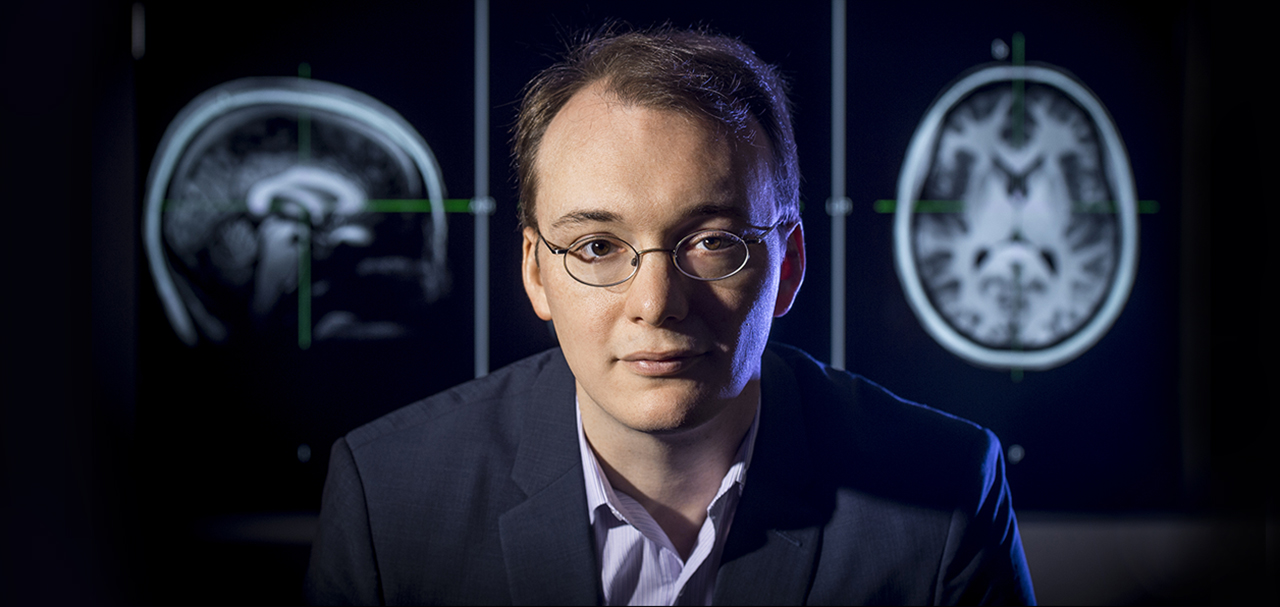 Jarred Younger
Jarred Younger
Healing Help
“There are so many ways that the mind can truly affect how the body operates, in very fundamental ways,” says Younger.
Last Call
Natural Recovery for Problem Drinkers
By Nicole Wyatt
 Problem drinkers have traditionally had one path to follow to quit misusing alcohol, says Jalie A. Tucker, Ph.D., M.P.H., professor in the Department of Health Behavior in the UAB School of Public Health: “They have to hit rock bottom, then get intensive treatment and lifelong sobriety and involvement in mutual help groups.” But research has revealed other routes to recovery, including “natural” recovery without treatment, she says. Now Tucker has launched a study to interview and follow drinkers who have resolved their problems by themselves. The findings could provide guidance and support to others facing similar issues who wish to quit.
Problem drinkers have traditionally had one path to follow to quit misusing alcohol, says Jalie A. Tucker, Ph.D., M.P.H., professor in the Department of Health Behavior in the UAB School of Public Health: “They have to hit rock bottom, then get intensive treatment and lifelong sobriety and involvement in mutual help groups.” But research has revealed other routes to recovery, including “natural” recovery without treatment, she says. Now Tucker has launched a study to interview and follow drinkers who have resolved their problems by themselves. The findings could provide guidance and support to others facing similar issues who wish to quit.
The majority of people who struggle with alcohol have mild to moderate problems, Tucker explains. These problem drinkers “often do not find existing services like mutual help groups and clinical treatment programs appealing, in part because of stigma, so they try to figure out how to recover on their own,” Tucker says, adding that many succeed.
Learning about the progress and setbacks experienced by people going through natural recovery could help UAB researchers develop behavior-change support tools—available by phone or Internet—to help other problem drinkers recover. “We want to make this knowledge available to people early when their problems are limited; it’s a more preventive approach,” Tucker says. “Problem drinkers would benefit from support that they can access without becoming patients in the health care system.”
• Give something and change everything for UAB public-health research.
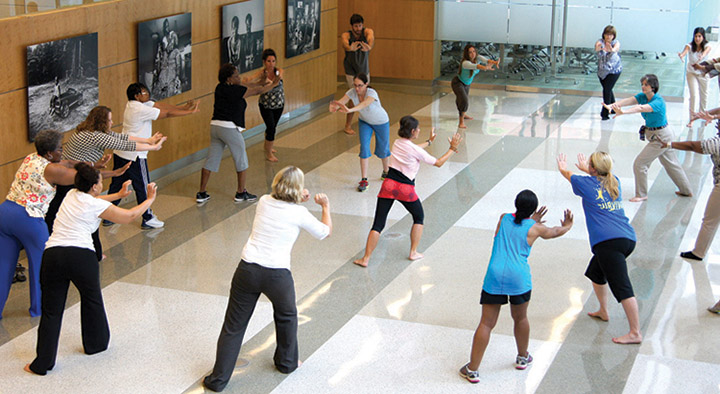
Stress Busters
Teaching Cancer Patients to Cope Through Movement, Thought, and Creativity
By Charles Buchanan
It’s not a stretch to say that restorative yoga has made a significant impact on a group of UAB Comprehensive Cancer Center patients. “They swear by it,” says Teri Hoenemeyer, director of education and supportive services for the Cancer Center. “They say they’re better able to manage their disease, they have a better quality of life, and they’re better able to cope with the stresses.”
Reducing that mental stress could benefit patients physically, Hoenemeyer says, and it’s the reason that the Cancer Center offers a variety of integrative medicine and complementary therapy programs—from yoga to art to mindfulness meditation—to help support patients undergoing treatment. “Stress can impact inflammatory factors and hormone levels that may play a role in cancer and chronic diseases,” she says. “People who are stressed all the time are more susceptible to illness.”
Research indicates that “when people start a regular, consistent complementary therapy practice, like meditation, yoga, or art, they report that they have reduced stress levels,” Hoenemeyer says. “And the more you do it, the better results you have.”
“We also see that people who are able to connect with others with similar experiences and interests in a support network have better survival rates in cancer,” Hoenemeyer says. These activities give patients a sense of control over a disease that can seem random and chaotic, she explains, adding that both patients and physicians find them appealing. “There’s definitely an improvement in quality of life, and there may even be biological responses. There’s still a lot we have to discover, but the effect is there—though it’s important to remember that what works for one person may not work for another.”
The Cancer Center would like to add more complementary therapy programs when funding is available, Hoenemeyer says. “We’re trying to include more of these practices, and more people at UAB are becoming interested in these types of studies.”
• Discover the wide range of patient and family resources at the UAB Comprehensive Cancer Center.
• Give something and change everything for UAB cancer patients and their families.
